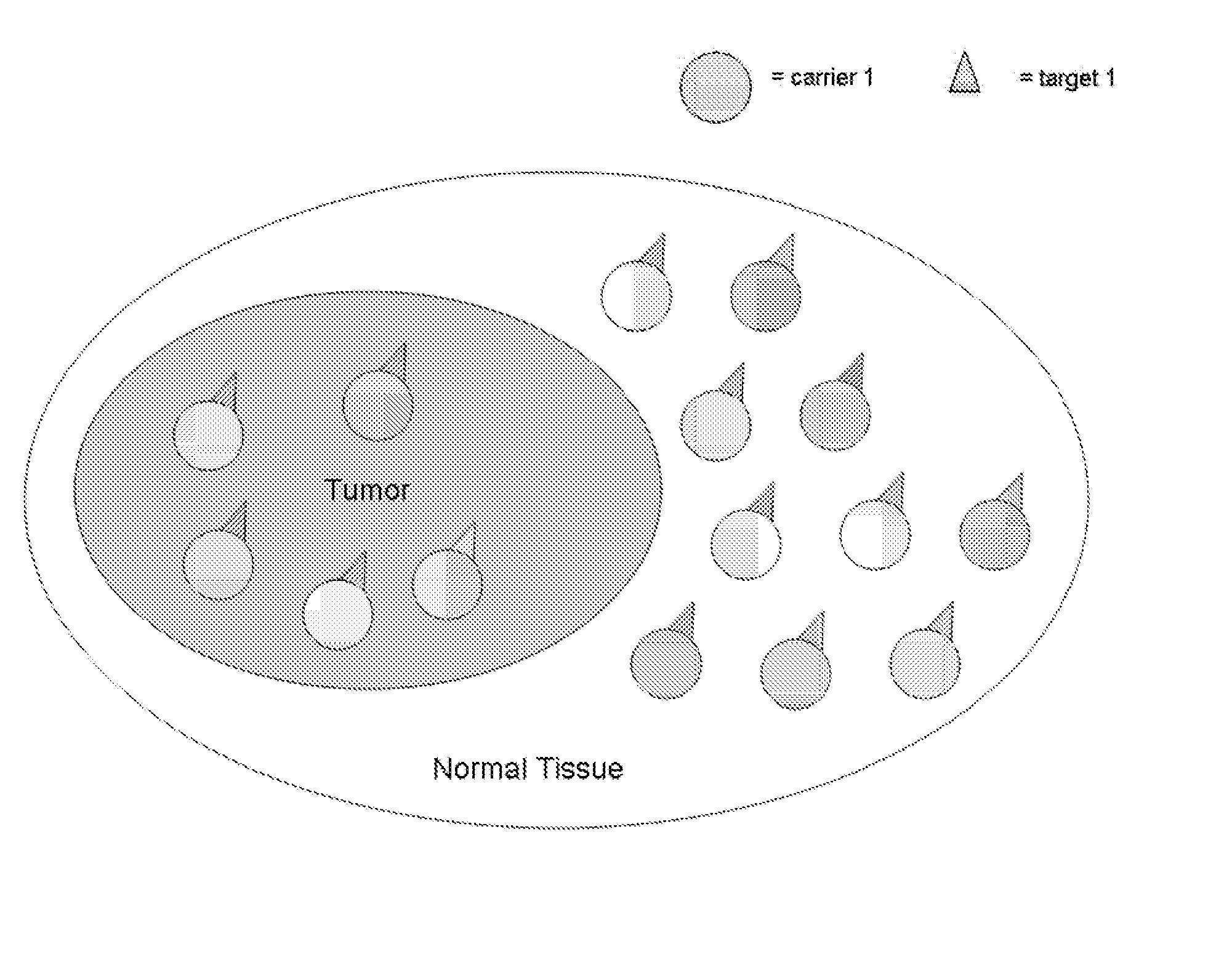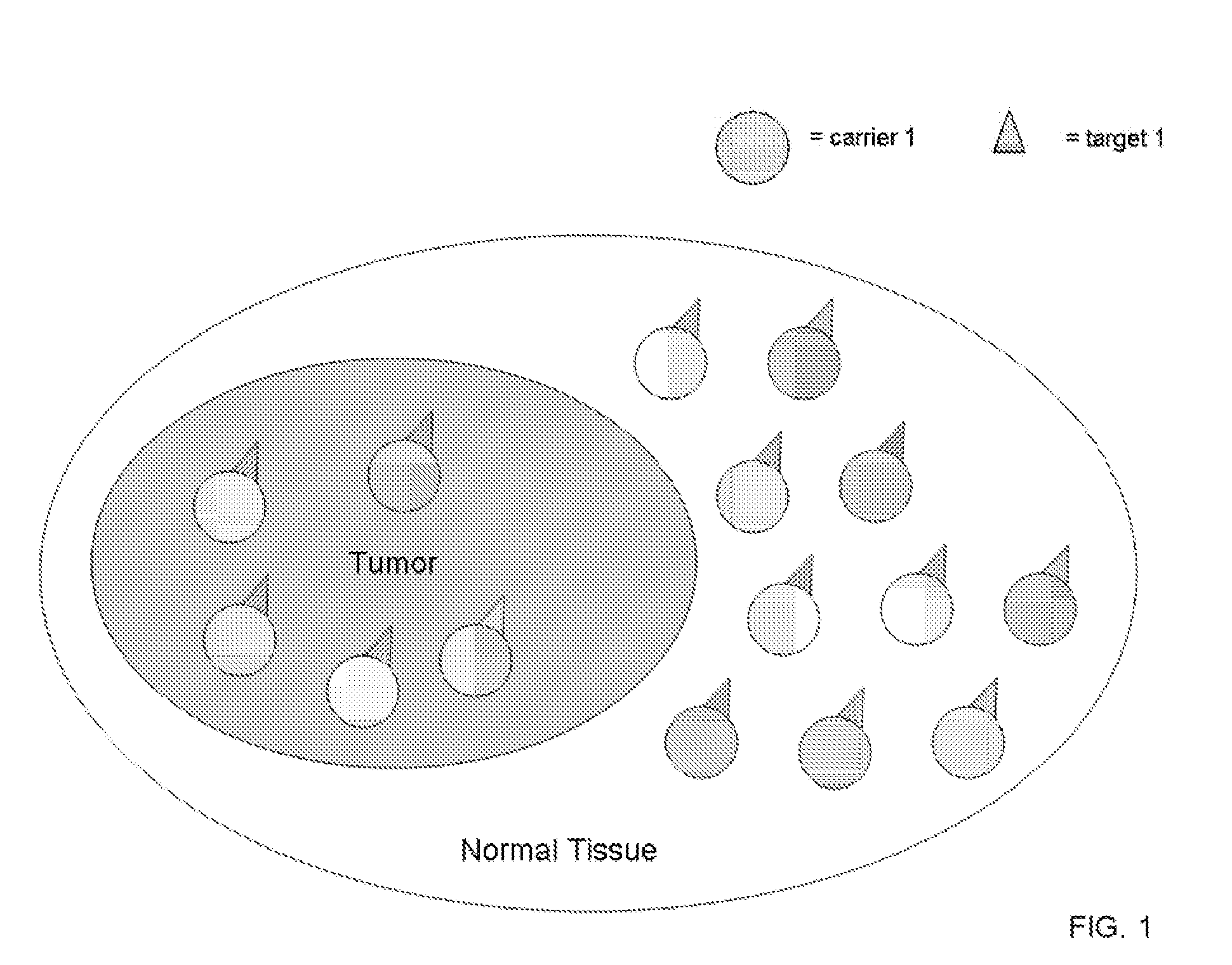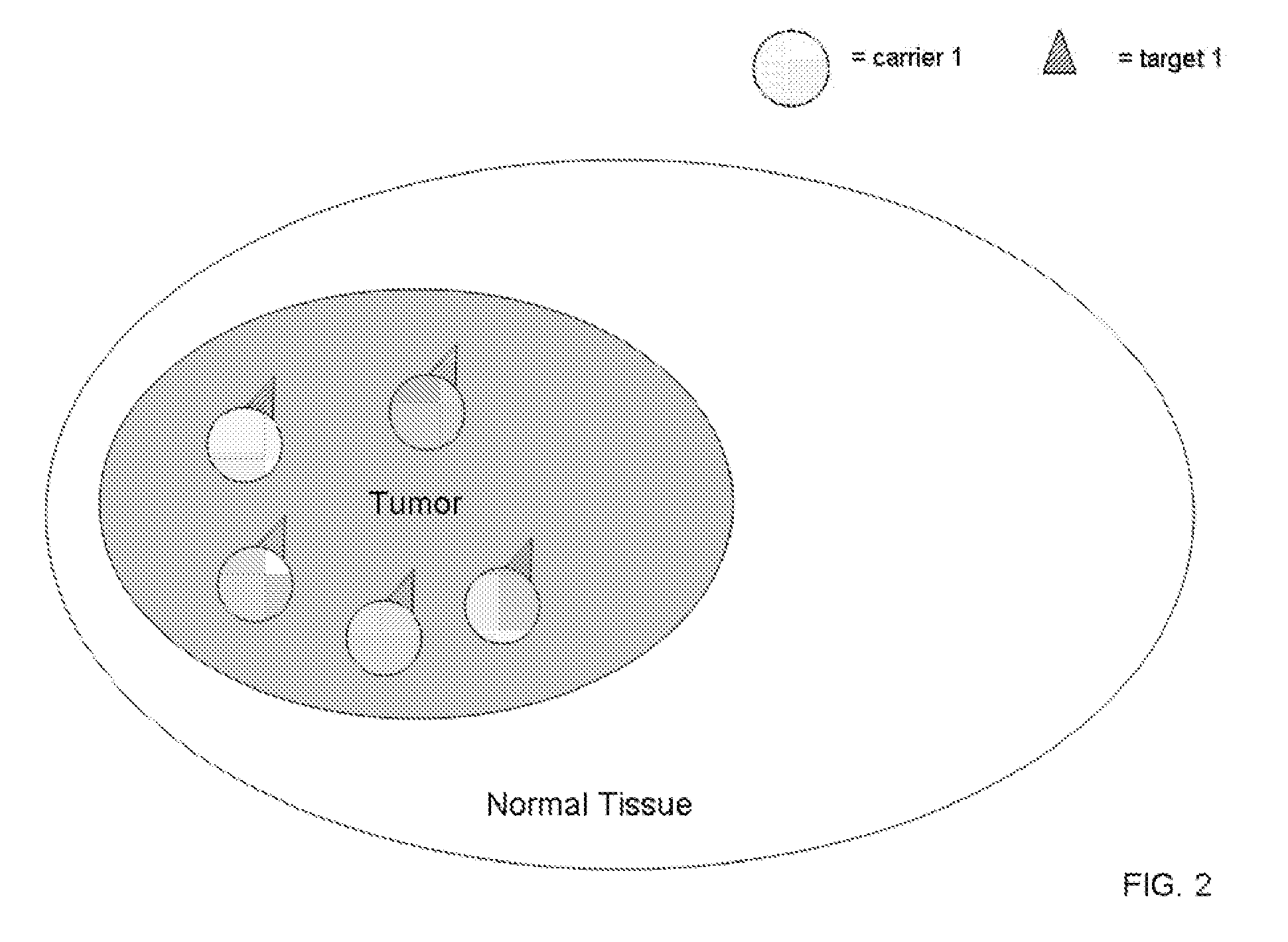Coupled Carriers for Enhancing Therapy
a carrier and therapy technology, applied in the field of linked agents, can solve the problems of high radiation dose absorption, significant toxicity, cell killing at the tumor site, etc., and achieve the effect of improving the uptake of high z agents, high specificity and affinity
- Summary
- Abstract
- Description
- Claims
- Application Information
AI Technical Summary
Benefits of technology
Problems solved by technology
Method used
Image
Examples
Embodiment Construction
[0045] Binary, or coupled, targeting agent of this invention consist of two sets of nanoparticles, or liposome or other biological (e.g., viral particles) or non-biological macromolecules (e.eg., silicon particles): each set is made of a high Z element, and each set of nanoparticle, in one instance, is complexed to different complementary molecules, e.g., “lock and key” molecules, which are capable of binding to its target on the other nanoparticles with high, specific affinity. Preferably, the pharmaceutical compounds comprise a heavy element, or a rare earth heavy element, or other therapeutic agent, in a nanoparticle, liposome or other macromolecular compound, complexed with an antibody, antibody fragment, protein, peptide, biotin-binding protein, streptavidin, ligand, receptor, nucleic acid-based aptamer, complementary nucleic acids, chelate, small molecule, or other complementary specific molecular binding units.
[0046] The nanoparticles, in one embodiment fo this invention, ca...
PUM
 Login to View More
Login to View More Abstract
Description
Claims
Application Information
 Login to View More
Login to View More - R&D
- Intellectual Property
- Life Sciences
- Materials
- Tech Scout
- Unparalleled Data Quality
- Higher Quality Content
- 60% Fewer Hallucinations
Browse by: Latest US Patents, China's latest patents, Technical Efficacy Thesaurus, Application Domain, Technology Topic, Popular Technical Reports.
© 2025 PatSnap. All rights reserved.Legal|Privacy policy|Modern Slavery Act Transparency Statement|Sitemap|About US| Contact US: help@patsnap.com



